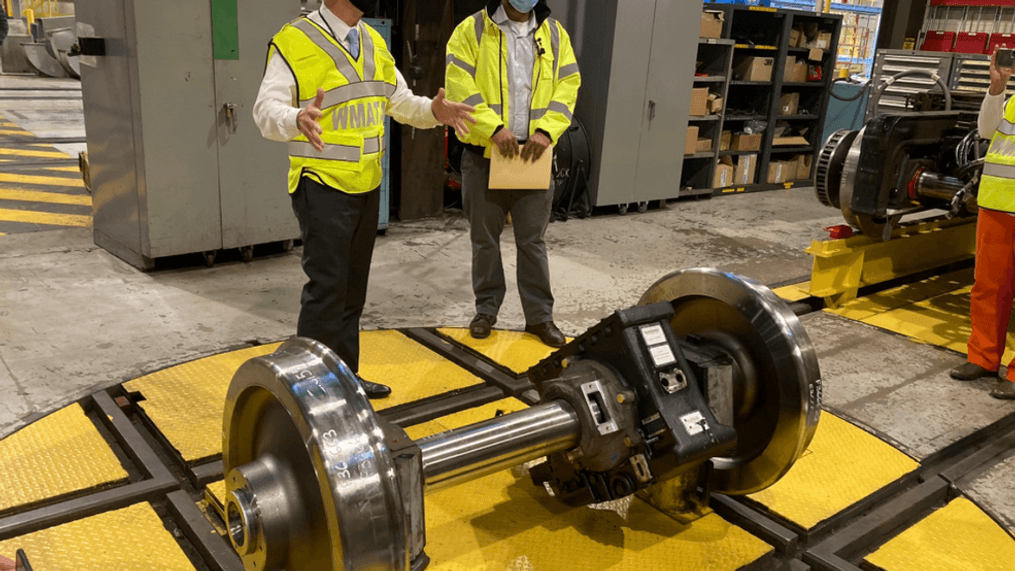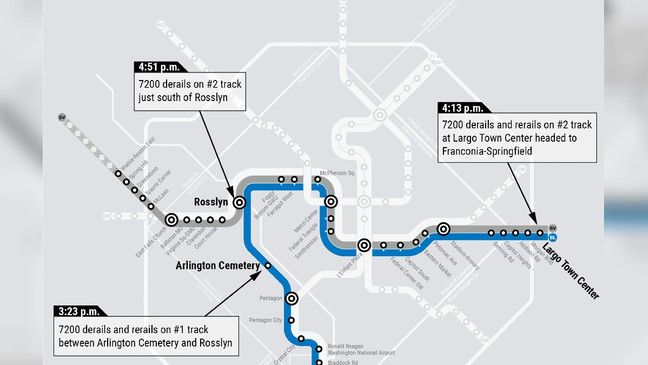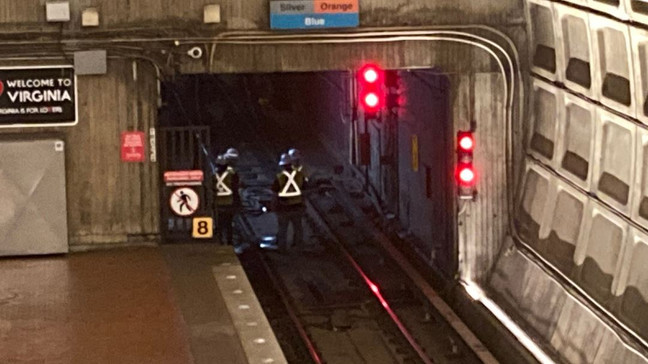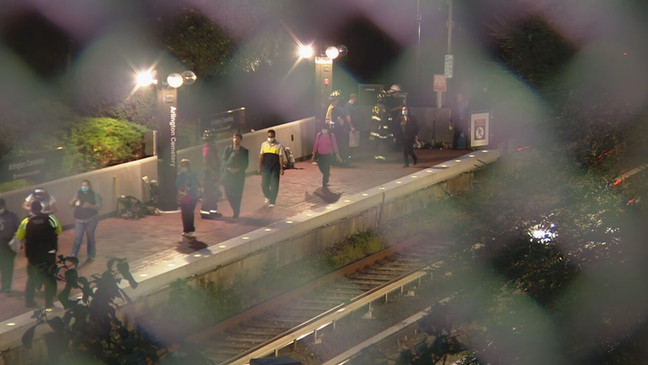NTSB: Wheels on derailed Metro train out of alignment 32X allowable amount
WASHINGTON (7News) — A new NTSB report shows one set of wheels on a Metro train that derailed in October was out of alignment by a measurement 32 times as great as the allowable amount.
On Wednesday the National Transportation Safety Board released its preliminary report into the October 12 derailment of a Metro Blue Line train that was headed south from Rosslyn to Arlington Cemetery when it derailed. 187 passengers had to be evacuated, with one taken to the hospital with non-life threatening injuries.
Days after the derailment all Metro 7000-series train cars were ordered off the tracks over safety concerns, and ever since riders have been dealing with long wait times as Metro has been forced to run rail service with far fewer trains at its disposal.
The NTSB preliminary report included the never before reported detail of just how far out of alignment a set of wheels on the car that derailed was when the NTSB inspected it after the derailment.
EARLIER: NTSB: Wheels on derailed DC metro Blue Line train out of alignment, safety alerts issued
Metro trains have four sets of wheels under each train, and the distance between the wheels on each set is supposed to be exactly 53 and 5/16 inches. If Metro does an inspection and the distance is more than 1/16 of an inch larger or smaller than that, a train is supposed to fail inspection.
The NTSB says the set of wheels that led to the derailment were two inches further apart than allowed. Two inches is 32 times as great as the allowable 1/16 of inch the wheels can move before the situation is considered potentially dangerous.
Continued testing of 7000-series cars extends reduced Metrorail service through year's end
Metro, the NTSB, the Washington Metrorail Safety Commission, the Federal Transit Administration, plus Metro's biggest union and the private companies involved in manufacturing the 7000-series trains and their wheels are all part of the investigation into the derailment.
Investigators are trying to determine how often 7000-series wheels need to be inspected to make sure they are not out of alignment. Metro recently completed initial tests on two 7000 series trains weighted to simulate being full of passengers as part of the effort to determine how frequent inspections should be.
Officials have previously said the train car that derailed -- which was the fourth out of eight cars in a 7000 series train -- was not behind on inspections. It had been inspected on July 29 and was not due for another 90 day inspection until October 27. Assuming the July inspection was done correctly, that means as of when the NTSB looked at the wheels post-derailment the wheels had gone two inches out of alignment in about 75 days.
Behind the scenes look: what Metro is doing to restore 748 out-of-action train cars
Inspections on every 7000 series train post-derailment turned up 20 other trains that had wheels out of alignment. Prior to the derailment Metro had found 18 other sets of wheels out of alignment in 2021, but didn't alert the public or safety overseers even though the problem had begun popping up as far back as 2017. Prior to 2021 only a handful of sets of wheels had failed inspection each year.
Wednesday's report also revealed for the first time the amount of estimated damage due to the derailment: $715,000.
The report also talked about previously reported details including that the train car that derailed had briefly derailed two other times that same afternoon. It had derailed at 4:13 p.m. at Largo Town Center on the Blue Line, then again at 3:23 p.m. near Arlington Cemetery. Both derailments occurred at what are called switches on the tracks, and both times one switch threw the train car off the tracks, but then a second switch quickly threw it back on the tracks.
Broken sections of brake discs were later found at both locations.
The final derailment happened at 4:51 p.m. as the train encountered a switch just outside the Rosslyn station. That time there was no second switch, and the train never got back on the tracks. The NTSB report says the train was able to travel 1800 feet before being unable to go any further. It says initially the operator thought there was a stuck brake, and did not realize one of the cars had gone off the tracks.
Riders shared videos and stories with 7News about how the situation grew worse the more the operator tried to move the train.
Metro has still not given a timeline on when 7000 series trains could return, but has said slow service will continue at least through the end of this month.



